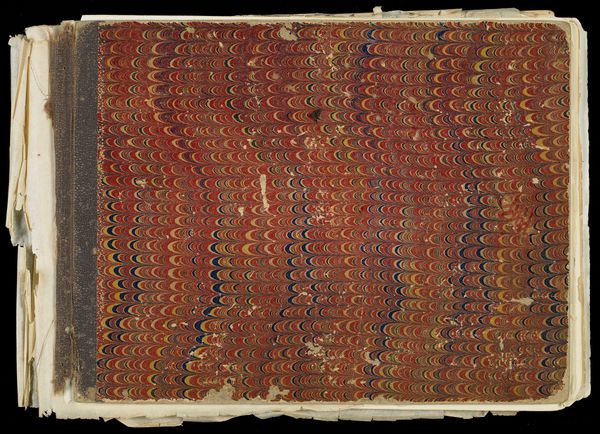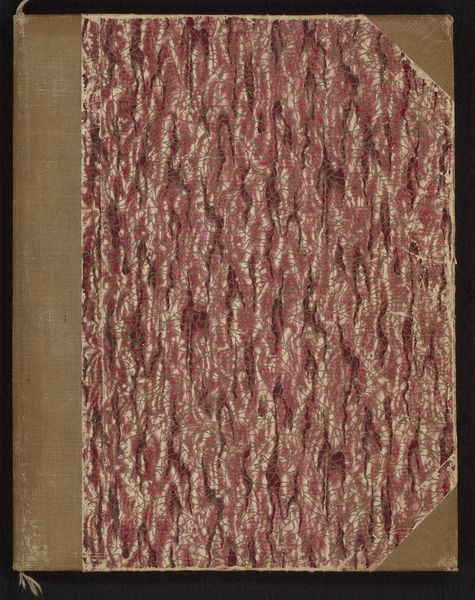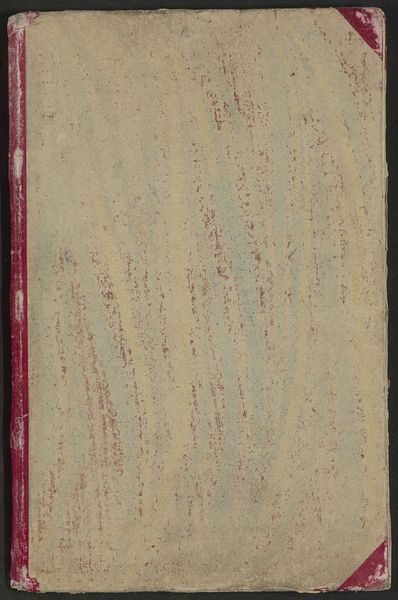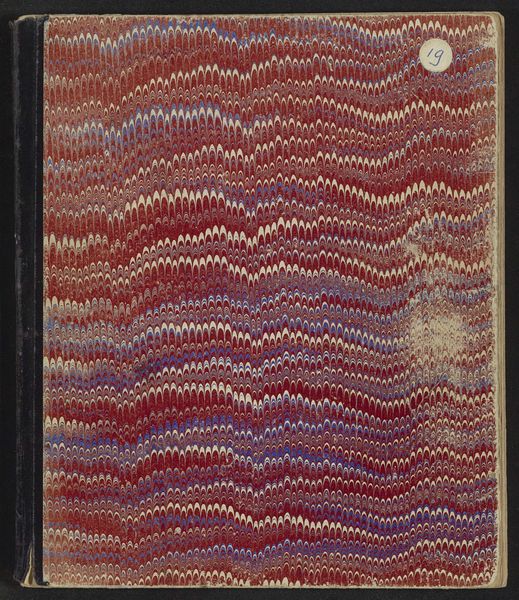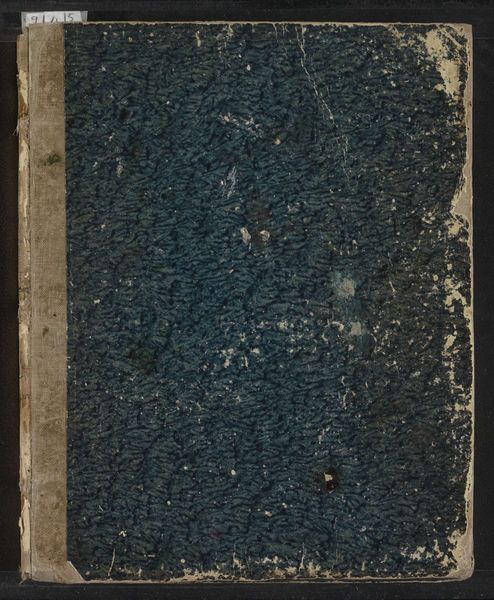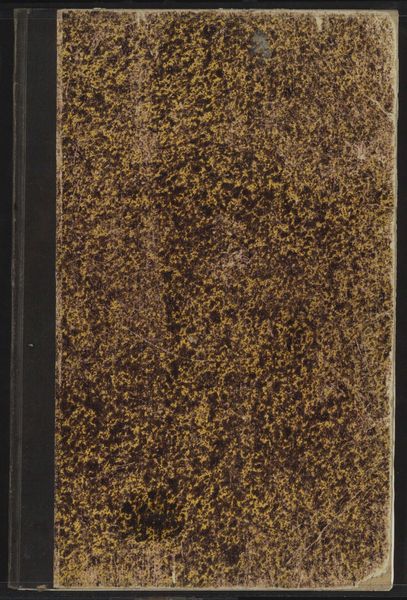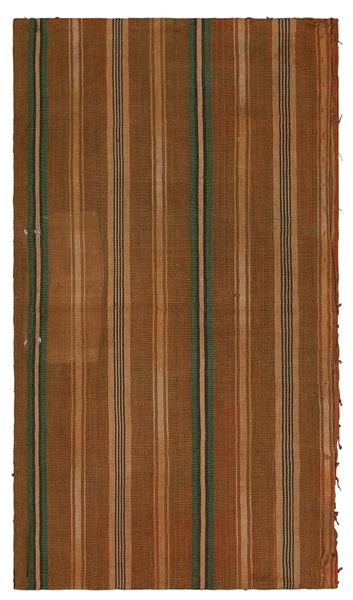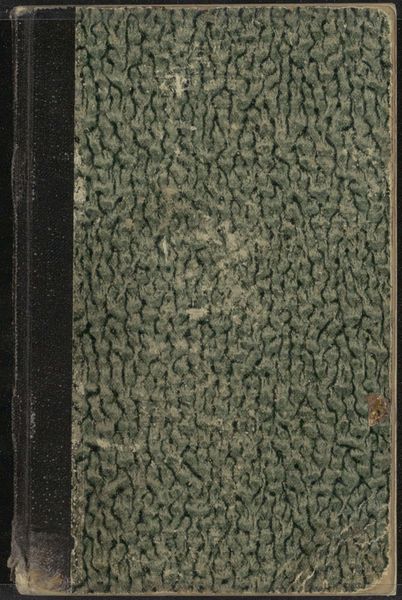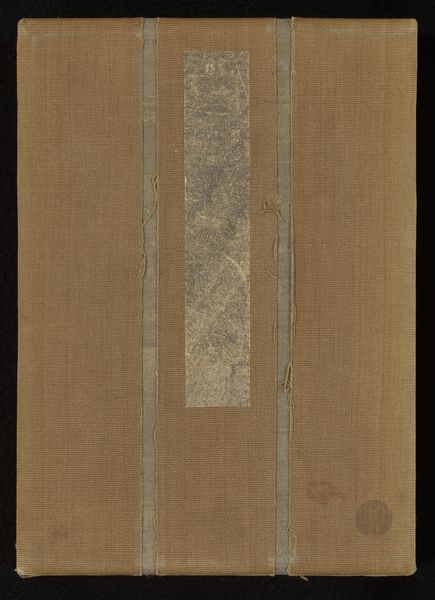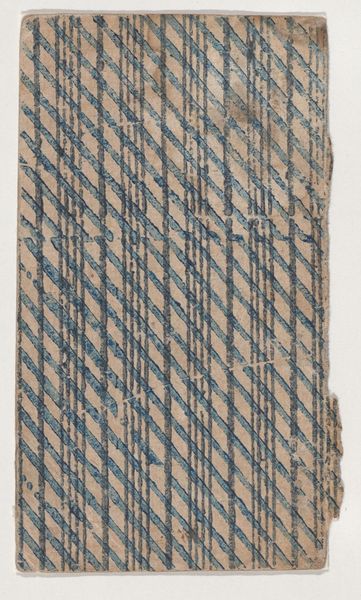
mixed-media, paper, impasto, architecture
#
mixed-media
#
art-nouveau
#
paper
#
impasto
#
abstraction
#
architecture
Dimensions: height 280 mm, width 240 mm, thickness 8 mm, width 477 mm
Copyright: Rijks Museum: Open Domain
Curator: Standing before us is "Schetsboek met 30 bladen," or "Sketchbook with 30 Leaves," dating from around 1905-1906, created by Carel Adolph Lion Cachet. Editor: It’s deceptively simple. The marbled cover, predominantly red with swirling patterns, is like a chaotic microcosm—almost overwhelming at first glance. Curator: Cachet was working during a period of significant societal upheaval and artistic innovation. The sketchbook, with its mixed media and hints of Art Nouveau, reflects the broader search for new forms and the rejection of traditional artistic norms happening at the time. It suggests a deliberate attempt to explore abstraction, a departure from conventional representation. Editor: The lack of a defined focal point is key, I think. The cover seems designed to resist singular interpretation, forcing the viewer to confront the totality of the texture. Is it just me, or does that effect seem almost...modernist? Curator: Precisely! The materiality itself becomes the subject. We have to ask, what purpose does this sketchbook serve? Was it merely a receptacle for ideas or a statement about the nature of artistic creation itself? Remember the growing prevalence of orientalism at this time. Editor: Orientalism? Because of the marbled patterns? The repetitive shapes certainly invoke a sense of ritual or, more broadly, decorativeness... Curator: Consider that many art nouveau artists appropriated forms and patterns they associated with Japanese art, consciously or unconsciously. The sketchbook serves as an accessible resource but its creation mirrors that artistic fusion as well. Editor: It also speaks to the evolving understanding of identity at the time—Dutch identity, artistic identity. Cachet wasn't working in a vacuum; these abstract notions would also have impacted marginalized peoples—even informed new means of understanding liberation. Curator: A fruitful observation, one can consider that sketchbooks hold a deep potential and value that supersedes an art historian or observer, in the purest sense they contain the possibility for the new and for transformation. Editor: A sketchbook becomes a space of infinite possibilities! Indeed, thanks for allowing me a peak into Cachet’s private sphere of boundless creativity!
Comments
No comments
Be the first to comment and join the conversation on the ultimate creative platform.
